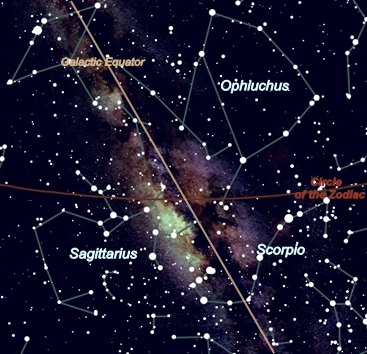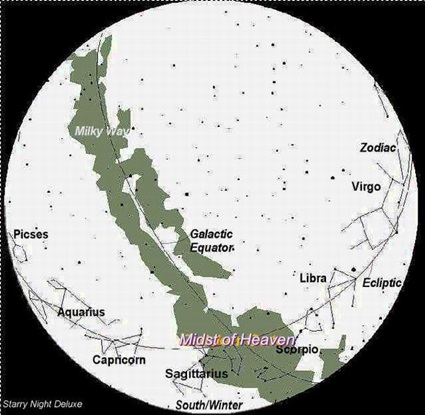|
The Sign of the Son of Man in the Clouds of Heaven Chapter 1 The Place By Steve
Santini January
2015
After Jesus had come to
Jerusalem just days before his sacrificial death he spoke of the future
tribulation that was to befall mankind. As he moved on in his discourse to
the wrath of the tribulation, he said, Then the sign of the Son of Man
will appear in heaven, and then all the tribes of the earth will mourn, and
they will see the Son of Man coming on the clouds of heaven with power and
great glory.(Matthew 24:30) Where, then, is this sign to appear? First, let's look at other verses where Jesus spoke of the sign of his
return in the clouds of heaven. Jesus
saith unto him, Thou hast said: nevertheless I say unto you, Hereafter shall
ye see the Son of man sitting on the right hand of power, and coming in the
clouds of heaven. Matthew
26:64 And
Jesus said, I am: and ye shall see the Son of man sitting on the right hand
of power, and coming in the clouds of heaven. Mark 14:62 The clouds of heaven are
the clouds of cosmic dust that envelop the dense star field in the spiraled plane around the center of the galaxy.
This clouded celestial band was known figuratively to the Greeks,
Romans and Egyptians as a stream of milk. Other cultures used figurative or
mythological terms that identified this galactic circle as a river. The
Chinese, Japanese and Koreans knew it as the Silvery River, the Hindus as the
Ganges River of the Sky and the Arabians as the Celestial River. The Hebrews,
among other terms, called it the River of Fire. Daniel wrote of this
river of fire in a context that included "the clouds of heaven." I
watched till thrones were put in place, And the Ancient of Days was seated;
His garment was white as snow, And the hair of His head was like
pure wool. His throne was a fiery flame, Its wheels a burning
fire;A fiery stream issued And came forth from before Him. A thousand
thousands ministered to Him; Ten thousand times ten thousand stood before
Him. The court was seated, And the books were opened."I watched then because of the sound
of the pompous words which the horn was speaking; I watched till the beast
was slain, and its body destroyed and given to the burning flame."As for the rest of the beasts, they
had their dominion taken away, yet their lives were prolonged for a season
and a time."I was watching in
the night visions, And behold, One like the Son of Man, Coming with
the clouds of heaven! He came to the Ancient of Days, And they brought Him
near before Him. Daniel 7:9-13 The
clouds of heaven are most apparent to the unaided eye where the
galactic center glows behind clouds of cosmic dust.
In the view of this area,
the galaxy's purple hues glow due to the combined spectral colors of red,
from the older stars nearest the center, and blue, from the younger stars of
the spiraled galactic arms. At the margins, the cloud like cosmic dust band
is toned orange and grey while the thicker central clouds appear sooty black. Josephus, a first century
secular Hellenistic Judean, wrote that the veil hanging before the Holy of
Holies of Herod's temple was a panorama of the heavens with mystical
meaning.When Josephus described the
embroidered veil, he emphasized its colors of purple, blue, red and fine
linen with its natural hues of grey, yellow, orange and tan. Before these(doors) hung a veil
of equal length, of Babylonian tapestry, with embroidery of blue and fine
linen, of scarlet also and purple, wrought with marvelous skill. Nor was this
mixture of materials without its mystic meaning: it typified the universe.
For the scarlet seemed emblematical of fire, the fine linen of the earth, the
blue of the air, and the purple of the sea; the comparison in two cases being
suggested by their colour, and in that of the fine linen and purple by their
origin, as the one is produced by the earth and the other by the sea. On this
tapestry was portrayed a panorama of the heavens, the
signs of the Zodiac excepted. . . . Translated by William Whiston,
1895 The final phrase "the signs of the Zodiac excepted" seems to be lacking. In the Greek text from which
this was translated there is no definite article the.And, according to
the 1940 A Greek-English Lexicon, the Greek word plen
translated as excepted meant besides and in addition to in the later Greek language when Josephus wrote.[1] In light of this, the phrase should be
translated to include proximate signs of the zodiac. Proximate
signs around this area where the galactic center glows behind clouds of
cosmic dust are the constellations of Ophiuchus, Scorpio and Sagittarius.
Ophiuchus was known as the serpent holder and the universal healer, Scorpio as the conflicting one and Sagittarius, with its arrow aimed at the
heart of Scorpio, as the place of the mighty ones. David wrote of this place
of the mighty ones in the eighty-ninth Psalm. For
who in the heaven can be compared unto the LORD?who among the sons of the mighty can be
likened unto the LORD?God is greatly to be feared in the assembly of the saints, and to be
had in reverence of all them that are about him.Psalm 89: 6, 7 The Hebrew word for heaven in this verse is revealing. It
is shachaq. It is translated as clouds in eleven of the twenty-one
usages and as sky in seven, heaven in two and small dust in one. Sixteen of the usages appear in an immediate
context with the Hebrew word shamayim, the
word most often translated as heaven
in Old Testament scripture. Look unto the heavens,(shamayim) and see; and behold the
clouds(shachaq) which are higher
than thou. Job 35: 5 Who
can number the clouds(shachaq) in
wisdom?or who can stay the bottles of
heaven(shamayim) Job
38: 37 Though
he had commanded the clouds(shachaq)from above, and opened the doors of heaven(shamayim) Psalm 78:23 The LORD possessed me in the beginning of his
way, before his works of old.[2]I was set up from everlasting, from the
beginning, or ever the earth was. When there were no depths, I was
brought forth; when there were no fountains abounding with water.Before the mountains were settled, before
the hills was I brought forth: While as yet he had not made the earth, nor
the fields, nor the highest part of the dust of the world.When he prepared the heavens,(shamayim) I was there: when he set a compass upon
the face of the depth:When he
established the clouds(shachaq)above:
when he strengthened the fountains of the deep:When he gave to the sea his decree, that
the waters should not pass his commandment: when he appointed the foundations
of the earth:Then I was by him, as
one brought up with him: and I was daily his delight,
rejoicing always before him; Rejoicing in the habitable part of his earth;
and my delights were with the sons of men.Now therefore hearken unto me, O ye
children: for blessed are they that keep my ways. Proverbs 8:22-32 The Hebrew word for compass in this section further identifies the clouds as those of
the heavens shrouding the galactic plane's disc-like star field. In other
usages in the Old Testament the word compass
is translated as circle and circuit and is additionally defined in
lexicons as the vault of the heavens.[3] It is also translated here in Proverbs chapter
eight as circle in English
translations after that of the King James Version. Two great circles of heaven were known to
the ancient world. They were the circle of the zodiac and the galactic
circle. Greek sages who were influenced by the cosmologies of the
priesthoods in the Middle East wrote of these circles. In 360 AD Plato wrote: Such
was the whole plan of the eternal God. he made the universe a circle moving
in a circle This
entire compound he divided lengthways into two parts, which he joined to one
another at the centre like the
letter X, and bent them into a circular
form, connecting them with themselves and each other at the point opposite to
their original meeting-point; and, comprehending them in a uniform revolution
upon the same axis, he made the one the outer and the other the inner circle.
Now the motion of the outer circle he called the motion of
the same, and the motion of the inner circle the motion of
the other or diverse. The motion of the same he carried round
by the side to the right, and the motion of the diverse
diagonally to the left.Plato, Timaeus The Akkadians, Sumerians and Babylonians
considered the first post deluge city of Eridu, with Sagittarius as its patron constellation, to be
located at the crossing of the rivers. But the 25 acre city was located
12 miles from a river and Ur, the one time home of Abraham, was located in the
intervening distance. Furthermore, by nature, rivers do not cross each other.[4] However the circle of the Milky Way and the circle of
the ecliptic, which was also known in antiquity as a river, do cross at the
forefront of Sagittarius.[5] Likewise, Eridu, had as its patron god Enki,
the progenitor of the Sumerian pantheon. In relief Enki was
depicted standing in the middle of a river with the letter X inscribed on his
left ankle. When Aristotle wrote of
these circles he referred to the work of Eudoxus, the noted mathematician and
astronomer of ancient Greece. . .
.in either case three spheres, of
which the outermost is that of the fixed stars, the second revolves in the
circle which bisects the zodiac Aristotle, Metaphysics
1073b20 The word bisect in this quotation means to cut
in half or divide into two equal parts. In the Greek language from which this
reference was translated, the word bisect
are the words dia meson meaning through the middle.Dia
describes the motion along a line through like "through the gate." Meson is the genitive form of the
Greek word mesos.
In the King James Version of scripture mesos
is translated as midst in forty-one
of its sixty-one usages.[6] The author of the book of
Revelation used mesos in the phrase
"midst of heaven" three times. And
I saw an angel standing in the sun; and he cried with a loud voice, saying to
all the fowls that fly in the midst of heaven, Come and gather yourselves
together unto the supper of the great God; Revelation 19:17 And
I saw another angel fly in the midst of heaven, having the everlasting gospel
to preach unto them that dwell on the earth, and to every nation, and
kindred, and tongue, and people, Revelation 14:6 And I beheld, and heard an angel flying through the midst of heaven, saying
with a loud voice, Woe, woe, woe, to the inhibiters of the earth by reason of
the other voices of the trumpet of the three angels, which are yet to sound! Revelation
8:13
When Jesus Christ said, Then the sign of the Son
of Man will appear in heaven, and then all the tribes of the earth will
mourn, and they will see the Son of Man coming on the clouds of heaven with
power and great glory, he followed up with these words, "And he shall send
his angels with a great sound of a trumpet, and they shall gather together
his elect from the four winds, from one end of heaven to the other." (Matthew 24:30, 31) The apostle Paul also
wrote of the location of this sign and event in his second letter to the church
in Thessalonica. The letter is about the time when Jesus Christ will send
forth his holy angels. And
to you who are troubled rest with us, when the Lord Jesus shall be revealed
from heaven with his mighty angels,In
flaming fire taking vengeance on them that know not God, and that obey not
the gospel of our Lord Jesus Christ: II
Thessalonians 1:7-8 He
then wrote
about the antichrist first rising up to be worshipped as if he was God in the
dwelling of place God. Let
no man deceive you by any means: for that day shall not come, except
there come a falling away first, and that man of sin be revealed, the son of
perdition; Who opposeth and exalteth himself above all that is called God, or
that is worshipped; so that he as God sitteth in the temple of God, shewing
himself that he is God.[7]
II Thessalonians 2:3-4 Then
he writes about the coming forth of the angels. For
the mystery of iniquity doth already work: only he who now letteth will
let, until he be taken out of the way. II Thessalonians 2:7 Upon reading the King
James translation, it does not appear that the phrase until he be taken out of the way pertains to the revelation of
Lord Jesus and the angels written of in the letter's introductory chapter;
however, when the Greek words from which the translation was made and the
context and scope of the subject are considered, it is apparently so. The translation taken in this phrase comes from the
Greek word ginomai. Ginomai means come into being or into a new state of
being. Of its other 677 usages in the New Testament it is never translated in
any form or sense of the word take.[8] It is
most often translated in the sense of being
or of becoming and in about one-fifth
of its usages it is translated as come
to pass or come. The word translated way in the phrase is the Greek word mesos-the midst. As a result, this phrase
should be translated as "until he comes out of the midst." He that comes out of the midst is obviously the Lord Jesus Christ with all the angels of his saints. If it is true that the veil of the temple depicted those signs around the galactic center and that he is to return out of the midst of heaven depicted on that veil, the final events surrounding Jesus Christ's life on this earth appear prophetic for that veil was rent in the midst as Jesus set his spirit beside the Father's and exhaled his last breath. The only direct view of that veil from which the rending could be observed would have been on the Mount of Olives east of the walled temple mount.[9] And here on the Mount of Olives where Jesus placed his spirit beside the Father's and the veil was seen rending through the galactic center, Zechariah prophesied that Jesus Christ would one day come for his own.(Zechariah 14:4) And one of the malefactors which were hanged railed on him, saying, If thou be Christ, save thyself and us. But the other answering rebuked him, saying, Dost not thou fear God, seeing thou art in the same condemnation? And we indeed justly; for we receive the due reward of our deeds: but this man hath done nothing amiss. And he said unto Jesus, Lord, remember me when thou comest into thy kingdom. And Jesus said unto him, Verily I say unto thee today, thou shalt be with me in paradise. And it was about the sixth hour, and there was a darkness over all the earth until the ninth hour. And the sun was darkened, and the veil of the temple was rent in the midst. And when Jesus had cried with a loud voice, he said, Father, into thy hands I commend my spirit: and having said thus, he gave up the ghost. Now when the centurion saw what was done, he glorified God, saying, Certainly this was a righteous man. And all the people that came together to that sight, beholding the things which were done, smote their breasts, and returned. And all his acquaintance, and the women that followed him from Galilee, stood afar off, beholding these things. Luke 23:39-49 Three days later on this same mount he was raised from the dead and likewise forty days later in the face of this opening unto the most sacred Holy of Holies he ascended into the clouds as two angels stood by promising that he would come again in a similar manner. *** The reawakening of the galactic center as the sign for the return of the Lord Jesus Christ with his angels is declared three other times in the New Testament. Two are similar declarations made by Jesus near the end of his earthly life. The third was made by Peter about forty years later as his life waned. Studies of each of these records follow sequentially in the next three chapters. For as the lightning, that lighteneth
out of the one part under heaven, shineth unto
the other part under heaven; so shall also the Son of man be in his day.
Luke 17:24 For as the lightning cometh out of the east,
and shineth even unto the west; so shall also the
coming of the Son of man be. Matthew
24:27 We have also a more sure word of prophecy;
whereunto ye do well that ye take heed, as unto a light that shineth in a dark place, until the day dawn, and the day
star arise 2 Peter 1:19 |
Footnotes




